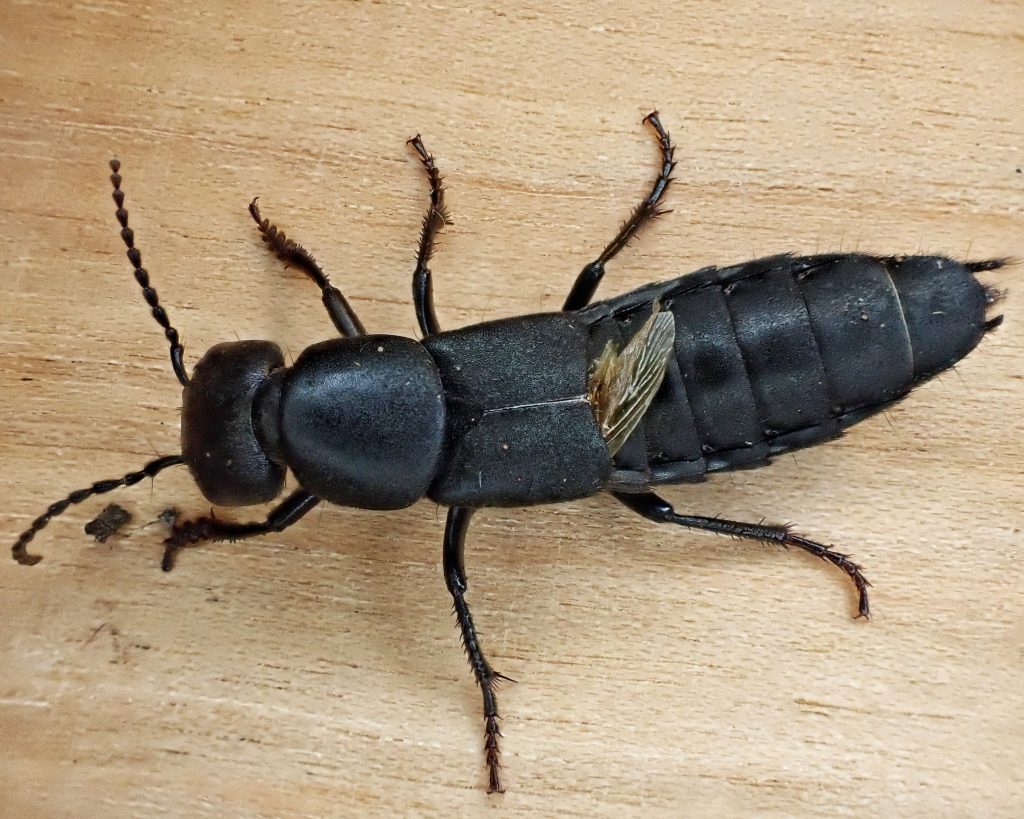
One of my favorite critters to find whilst on the clock was Ocypus olens, the Devil’s Coach Horse. I fact the first one I ever saw, and all subsequent ones, were found under the boards and concrete blocks of a shaded area where I, and many other medical transportation drivers, often parked while killing time waiting for someone to finish an appointment at one of the multitude of nearby medical offices. So, for my ‘I’m retired!’ post I intended to find and photograph a few. But the rove beetles (Staphylinidae) didn’t get the memo, and during several searches of the available cover there, I failed to find a single one.
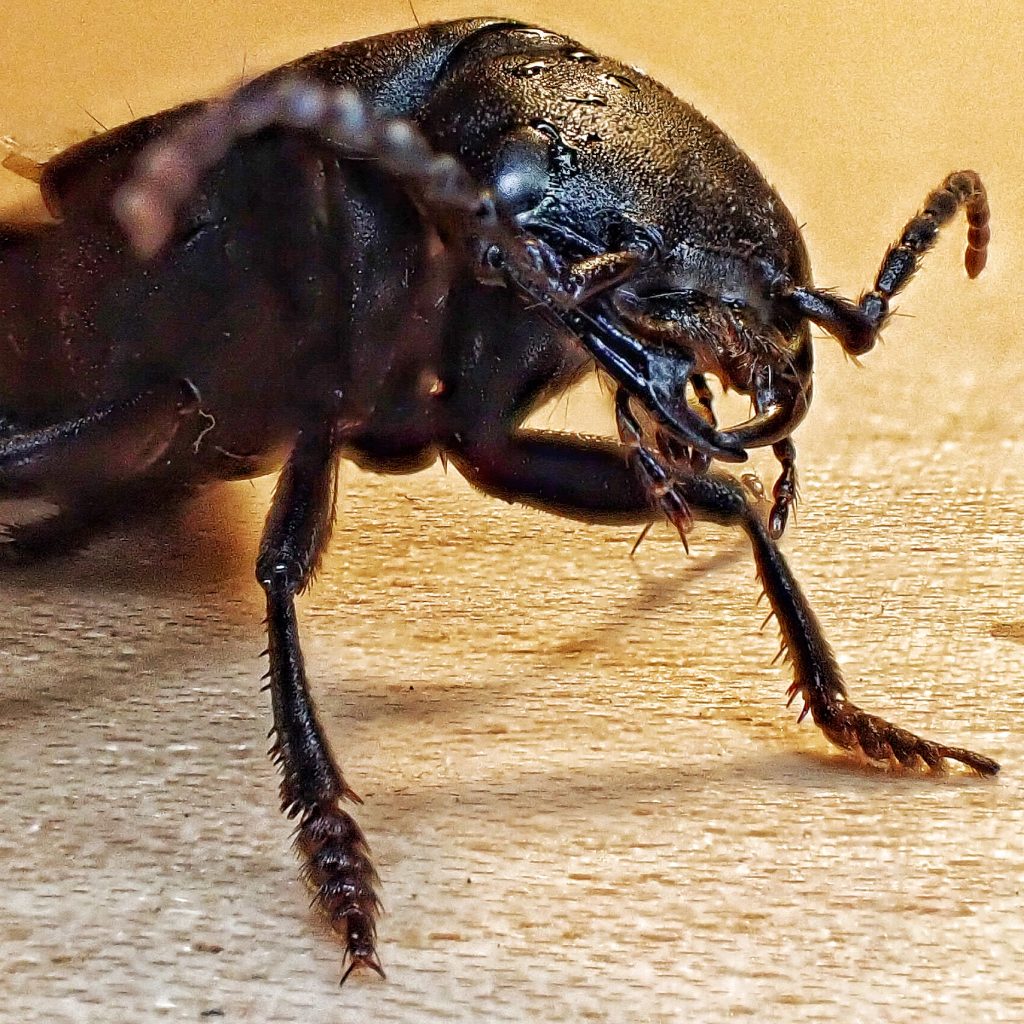
But that was okay, although I was (and still am) slightly puzzled by their absence, and I found some very cool true bugs at another location across town that I could use for my herald post. The next day, while hunting for an unlocked bathroom in a park in Kelso, Washington, I spied a log round rolled up against the cinderblock wall of an inaccessible facility, and when I rolled it back there was this beautiful Ocypus olens. I was only able to snap a couple photos before it started scurrying away, but fortunately I had a ready container and managed to capture it. After a bit of refrigeration it was an extremely cooperative model, and it now resides in Pam’s flower pots, hopefully laying waste to the cutworms and slugs therein.
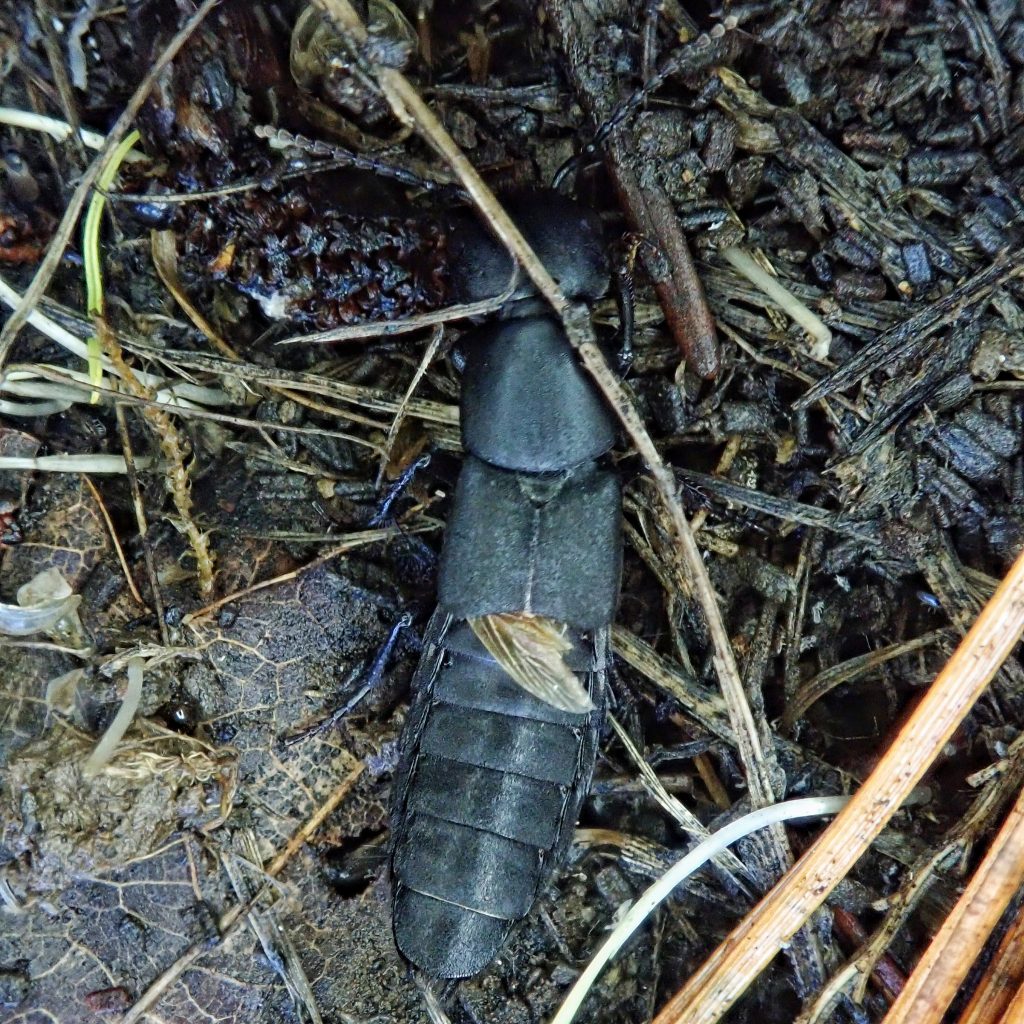
These beetles are native to Europe and North Africa, and the first one wasn’t found in North America until 1931, when it was reported from Southern California. They now range through several western states, and have apparently also recently been found in the ne US. They have been found to be an effective predator of another non-native European species, the destructive Brown Garden Snail (Cornu aspersum), as well as several introduced slugs that are pest species.
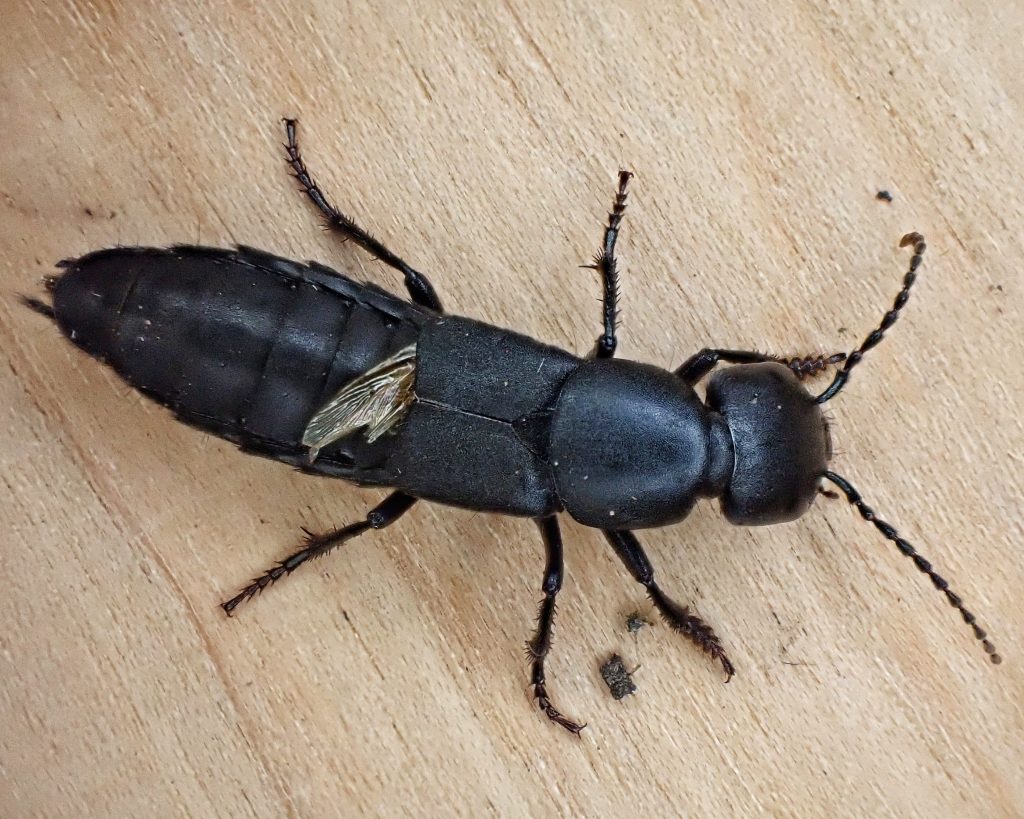
Due to some active and superstitious imaginations, there is much folklore that surrounds Devil’s Coach Horse beetles, most of it undoubtedly due to their all black coloration, surprising speed, and chemical defenses, although I don’t think of them as looking any more menacing than many other beetles. Perhaps it also relates to their slightly snakelike appearance, since British folklore has it that they ate the core of Eve’s apple, and crushing one mitigates for 7 sins. Irish myth claimed they would, gorgon-like, kill those who looked upon them, and that they ate sinners, and in the Middle Ages they were said to curse people by pointing their abdomen at them. So much fear directed at such a beneficial creature!
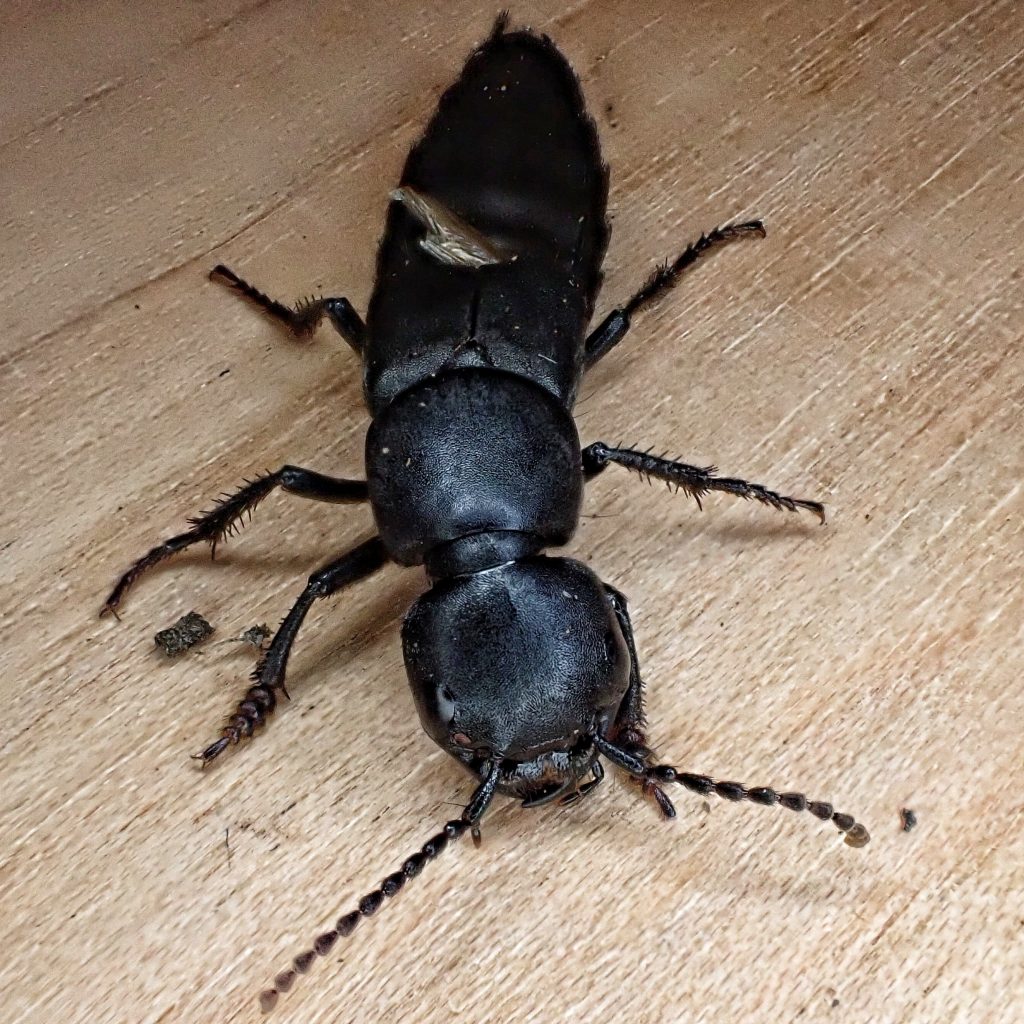
They do display a seeming lack of fear and willingness to stand their ground, opening wide their mandibles and cocking their abdomen at potential threats. And you don’t want them to pull the trigger on that cocked abdomen, because they have two white pygidial glands (hidden until they are needed) located near the tip that can release a bitter and foul smelling secretion designed to either repel a predator or make them taste so foul that it deters consumption. But in all of my times of messing with Ocypus olens I’ve never experienced anything more than a threat display.
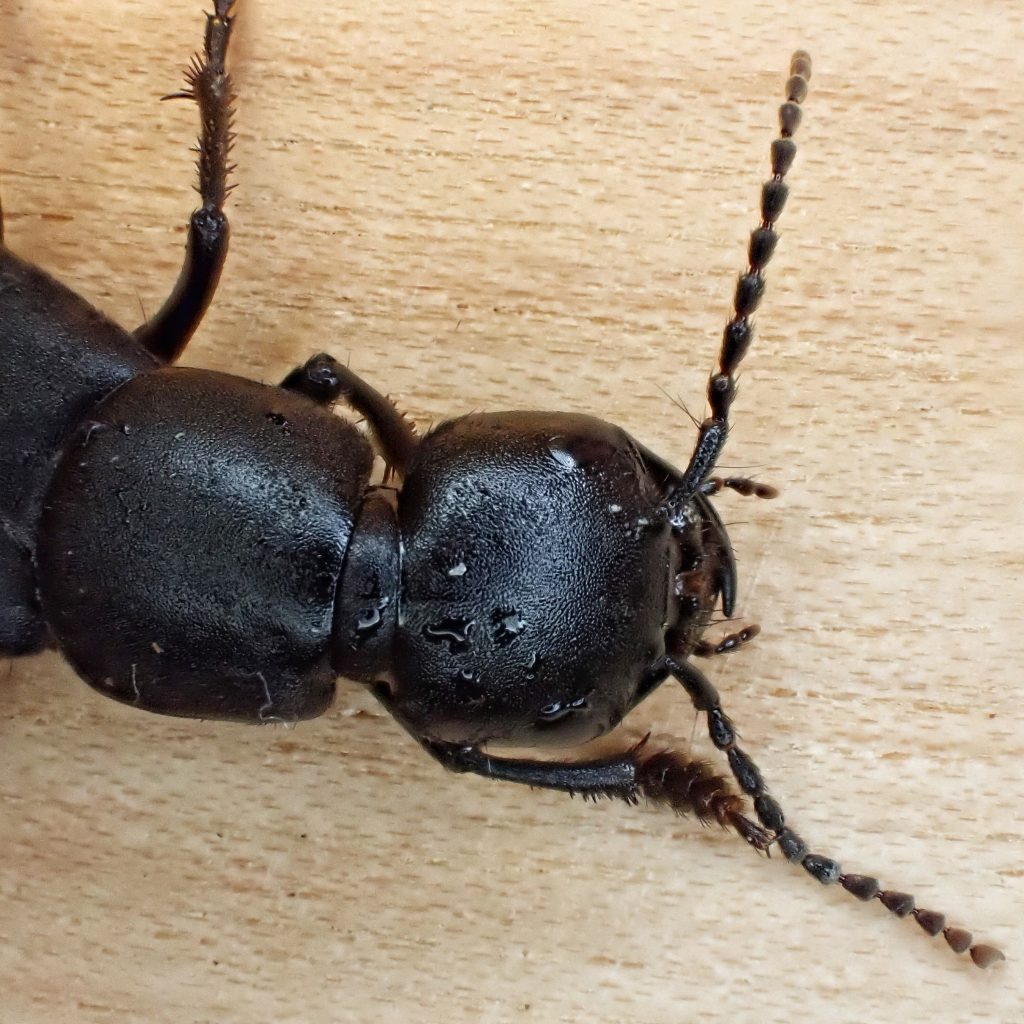
Description-Large (17-33mm long) all matte black, with black hairs, rove beetle, with its head slightly wider than its pronotum; elytra subequal to the pronotum, and small wings that are suitable for flight, though this behavior is seldom observed; minutely wrinkled pronotum lacking any sort of midline; large mandibles capable of piercing human skin.
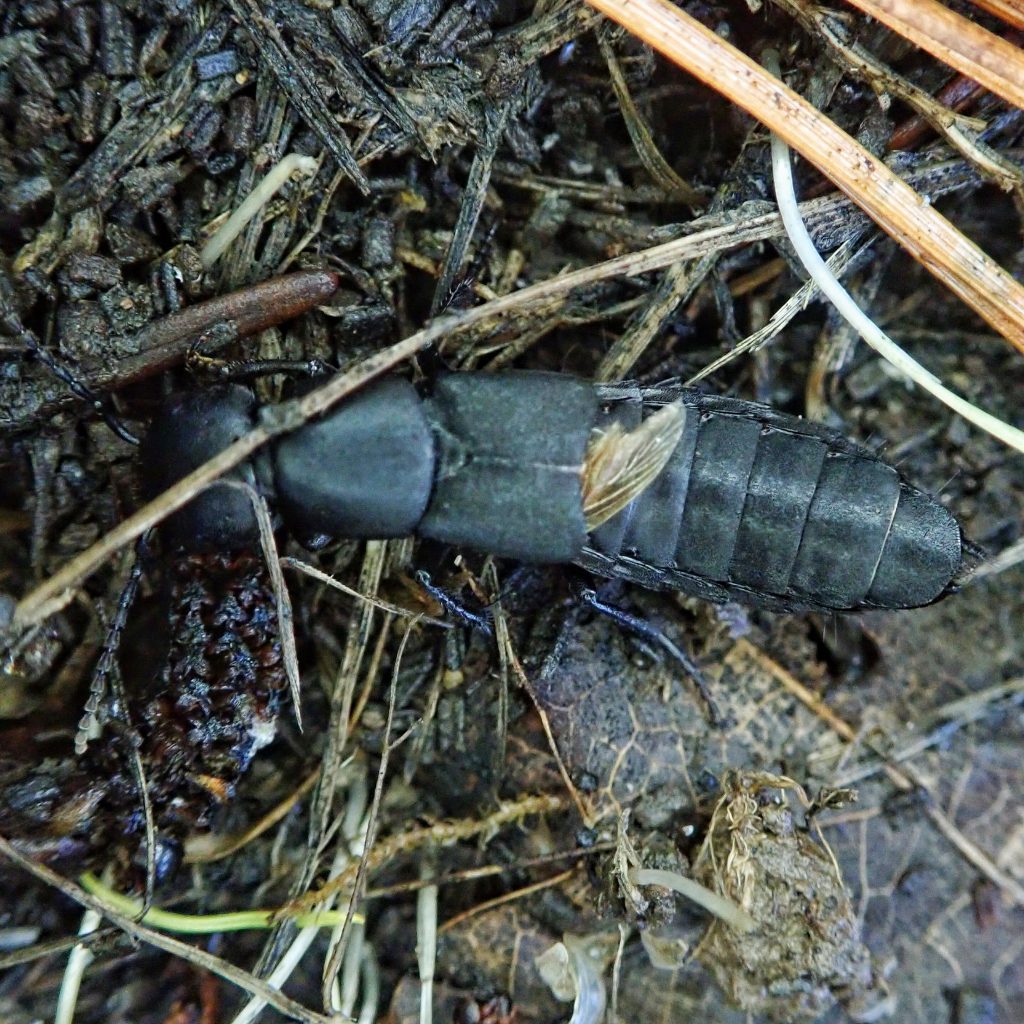
Similar species–Ocypus aeneocephalus has light colored hairs on elytra and abdomen ; Tasgius sp. smaller with smaller heads and smooth midline on back half of pronotum; Dinothenarus sp. much smaller, with smaller head and smooth midline on pronotum.
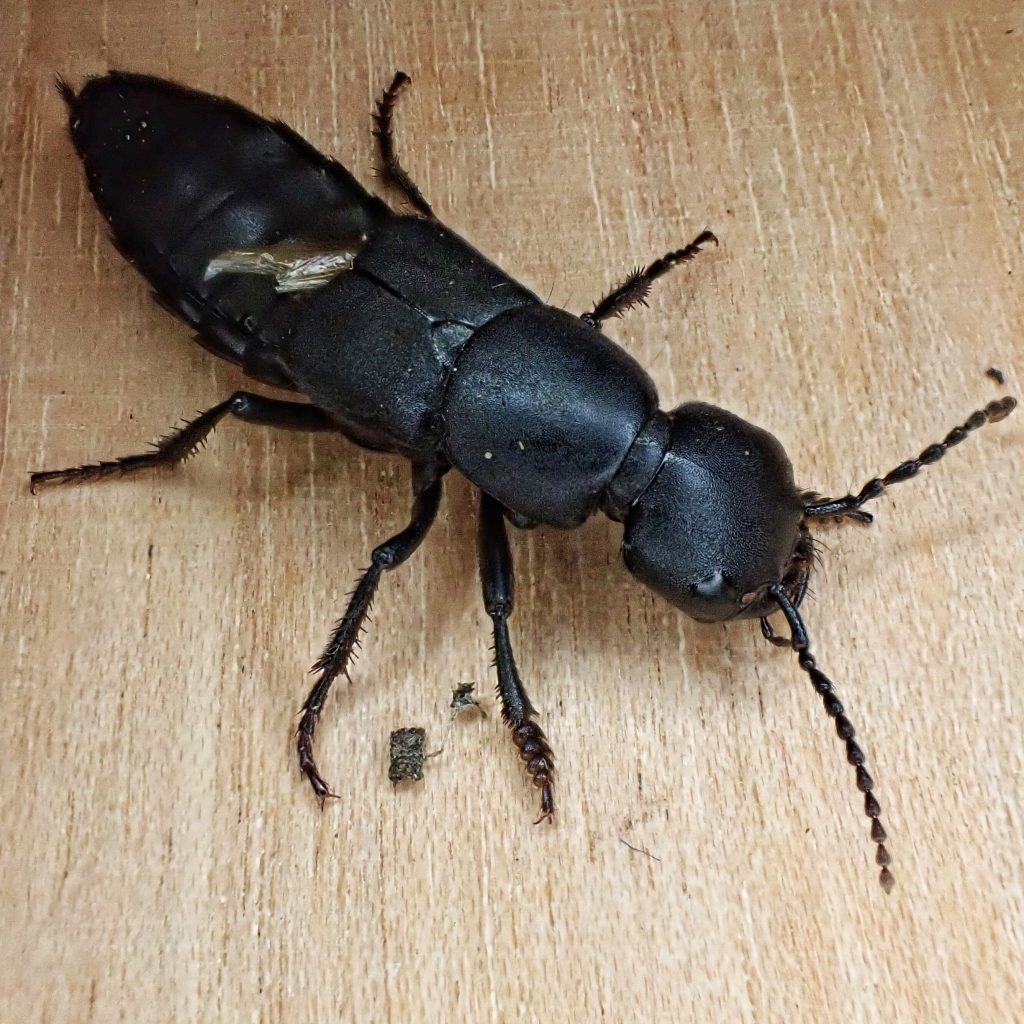
Habitat-Moderately damp areas in parks, disturbed ground, agricultural fields, forest edges, woodlands; often found near human dwellings; attracted to carrion, presumably for the maggots and other larvae.
Range-Native to Europe and north Africa; naturalized on the east coast and western North America; primarily found at low elevations west of the Cascades and in sw Oregon/nw California in our region.
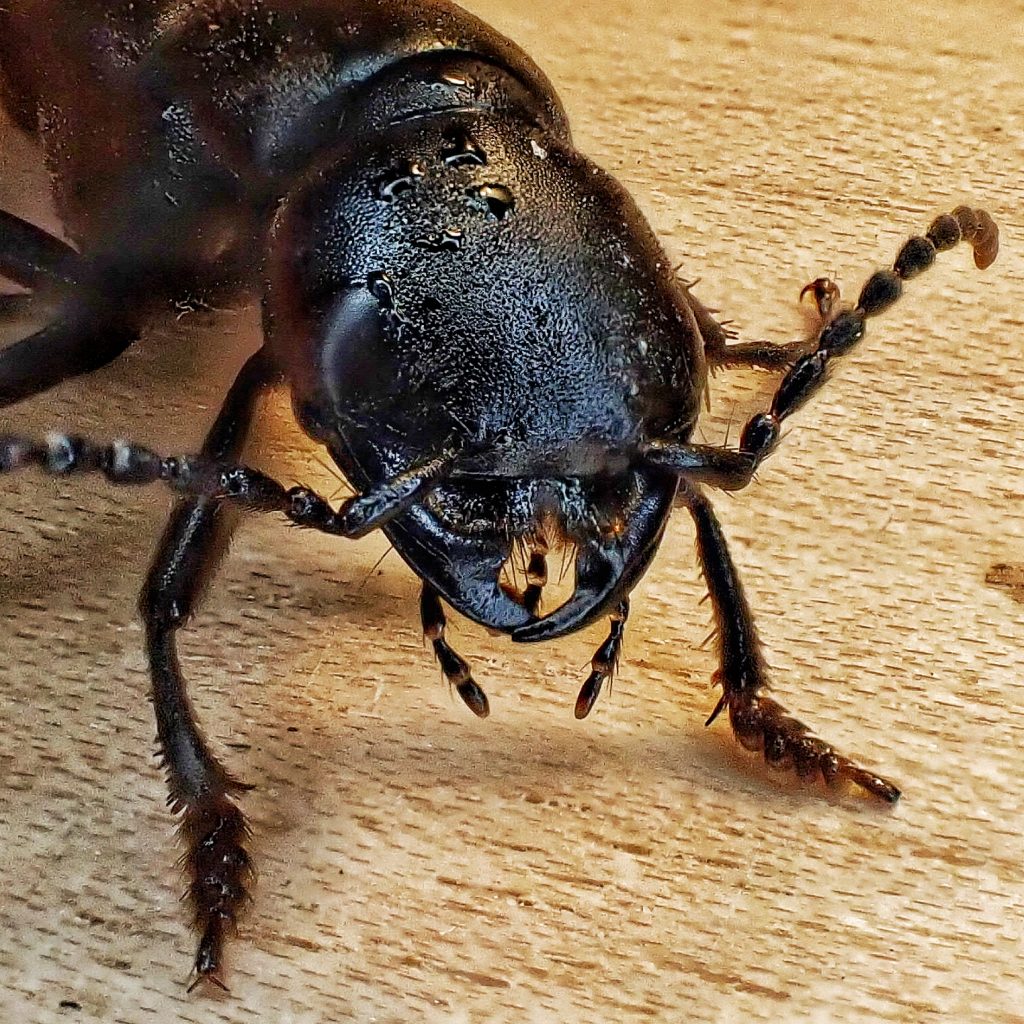
Eats-Snails, slugs, soft bodied larvae, spiders, worms, and possibly woodlice;
Eaten by-Presumably insectivores of any class, provided the can subdue it and either deal with, or negate, the noxious defensive fluid.
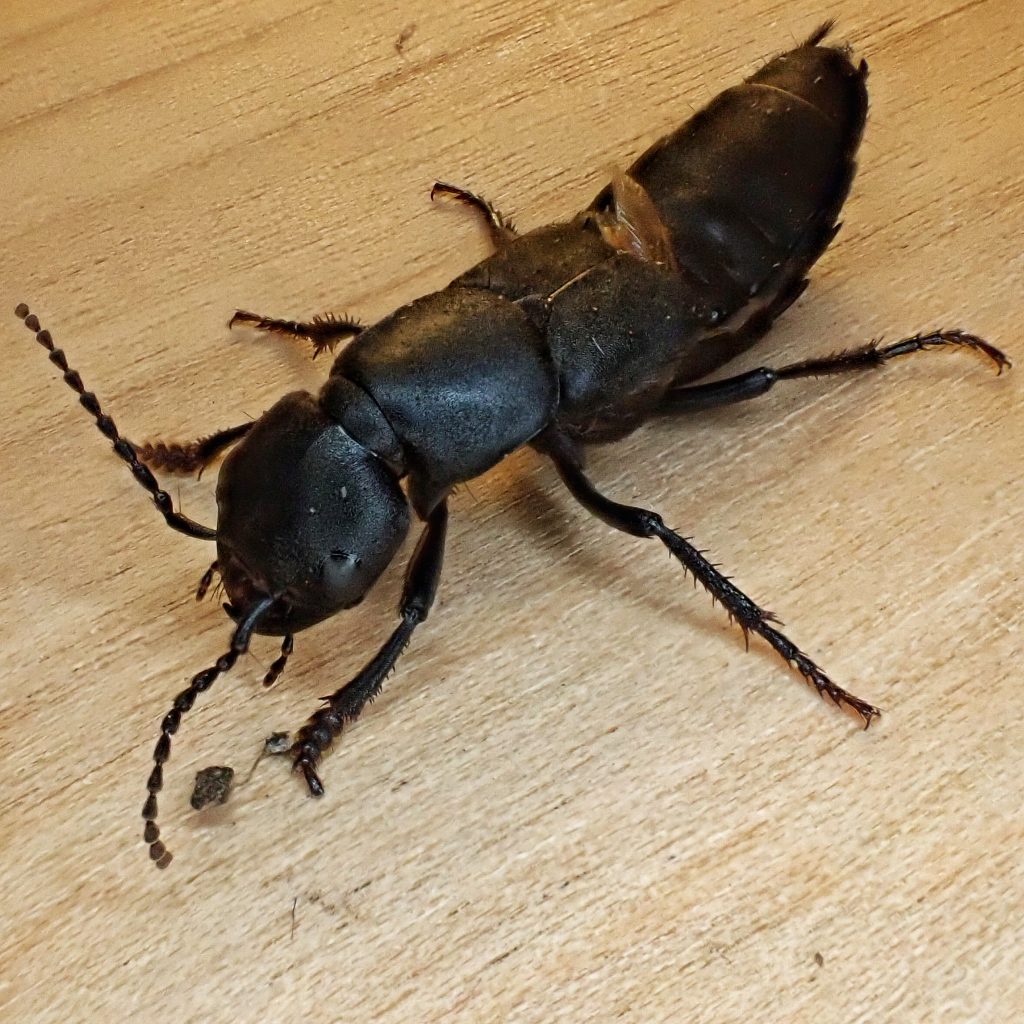
Life cycle-Breeding occurs in late summer/early fall, and ovipositing happens 2-3 weeks later; eggs are laid singly under debris and stones and in moss and leaf litter; eggs hatch in about 4 weeks and the larvae live in the upper soil; the larvae are actively feeding all winter, moving through two instars quickly, but spending up to 6 months in the third, where they become almost adult sized and enter pupation; pupation lasts about a month and adults emerge from pupation in early summer; may live for over 2 years.
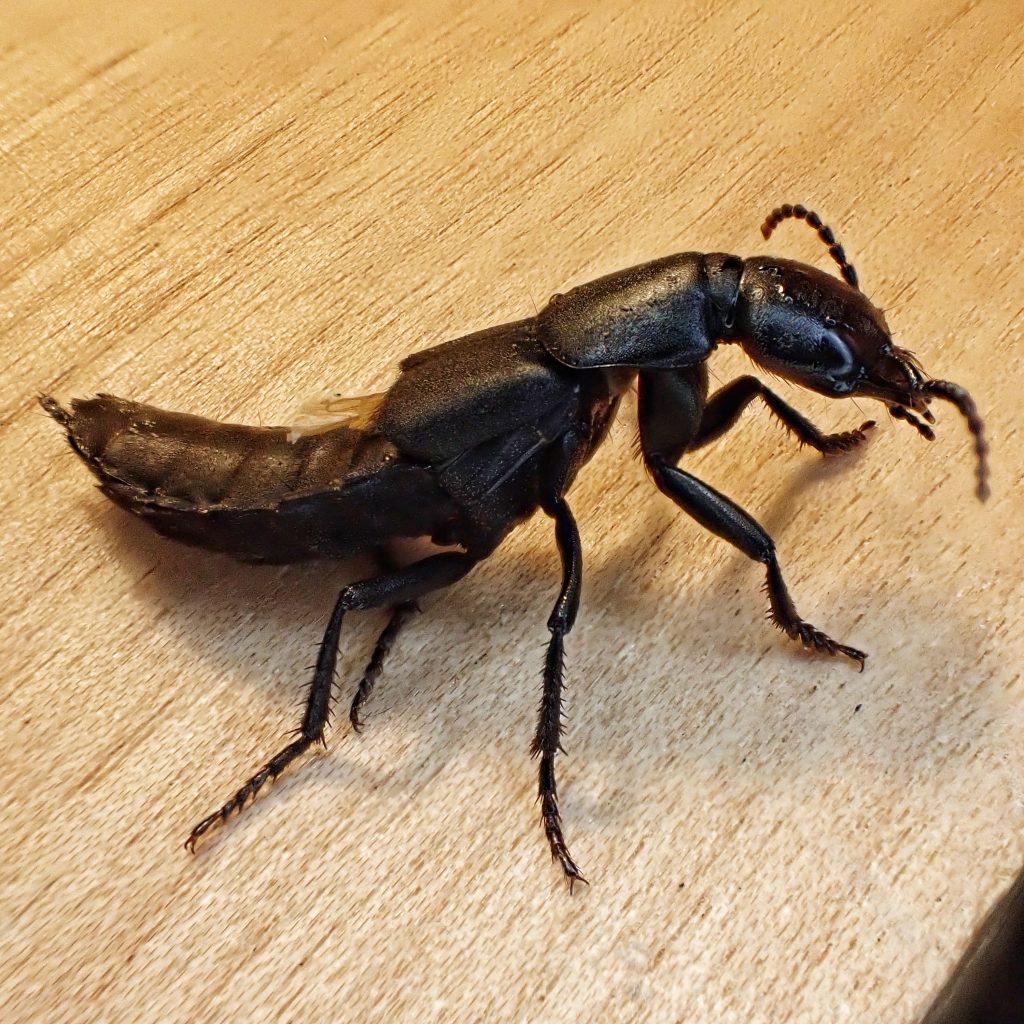
Adults active-Nocturnal; year around, but most active in the spring; often quiescent and under cover during the coldest and driest times of year.
Etymology of names–Ocypus is from the Greek for ‘swift of foot’, referring to how fast these beetles can move. The specific epithet olens is from the Latin for ‘stinking’, and refers to the scent released from glands on the abdomen.
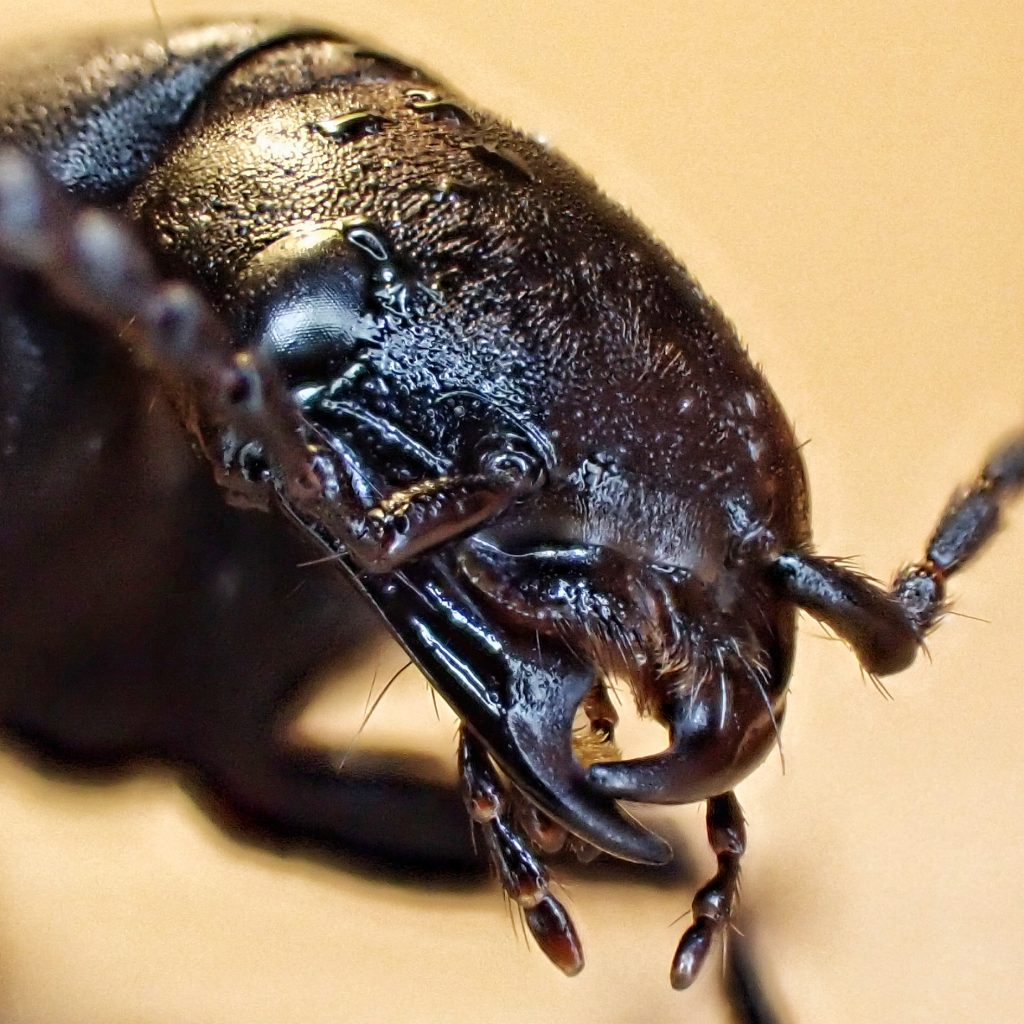
https://bugguide.net/node/view/131894
https://www.ukbeetles.co.uk/ocypus-olens
https://candide.com/US/insects/a7b6d877-ad1f-45b3-87eb-a690307ef0ea
https://www.woodlandtrust.org.uk/trees-woods-and-wildlife/animals/beetles/devils-coach-horse-beetle/
https://www.insectidentification.org/insect-description.php?identification=Devils-Coach-Horse
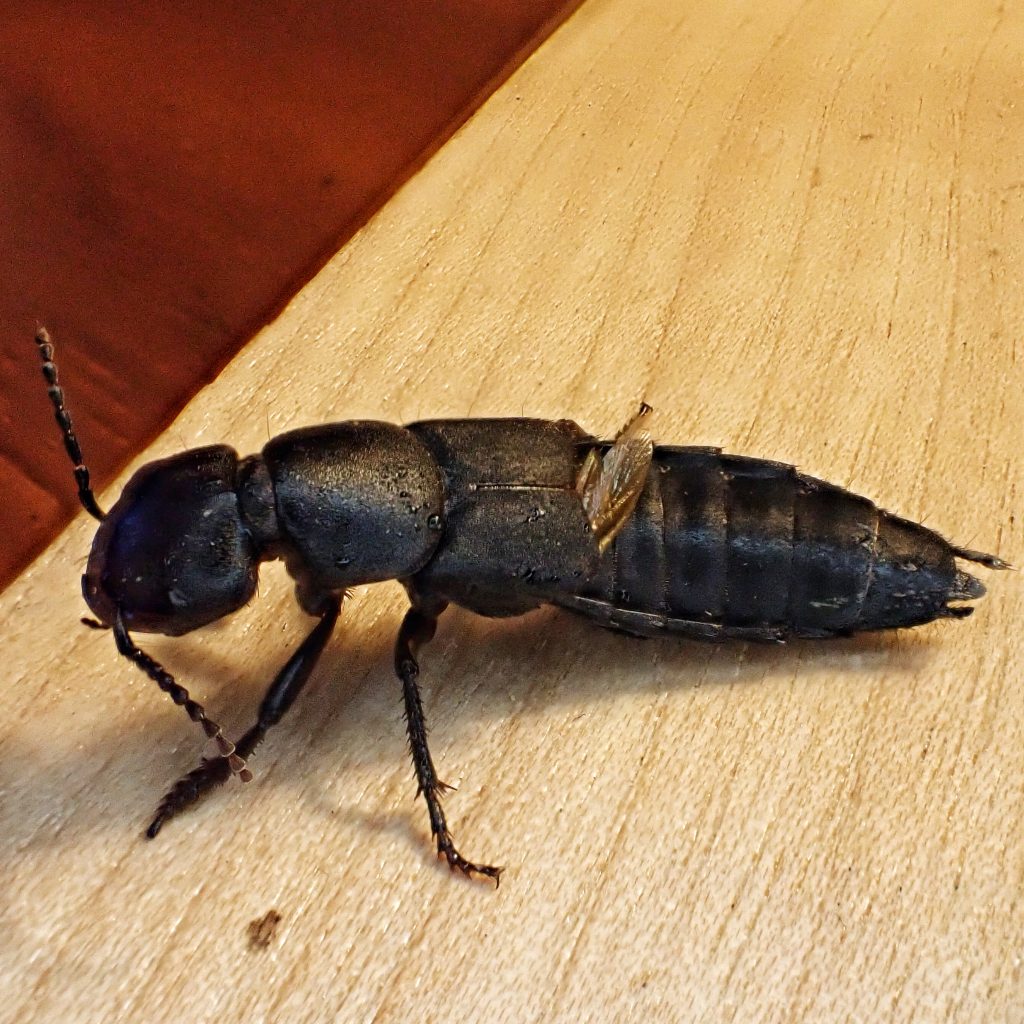
How lucky I am to have stumbled upon your site looking for the devils coach horse. I certainly love the natural world and you have helped me to appreciate it much more. I especially appreciate the “eaten by” heading, mostly lacking everywhere else. Thank you.
Thank you For your appreciation, Kim! Really glad you enjoy it! It’s a labor of love on my part.